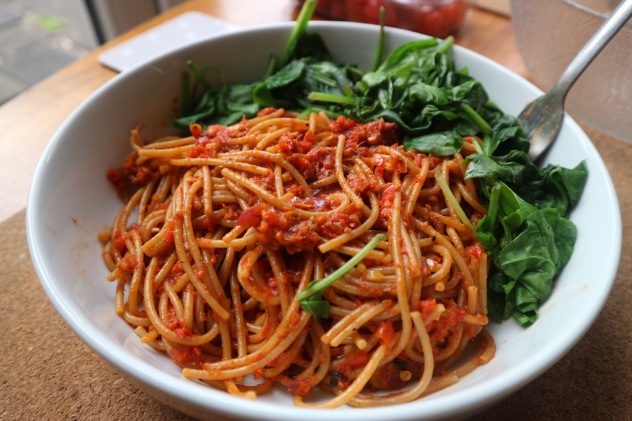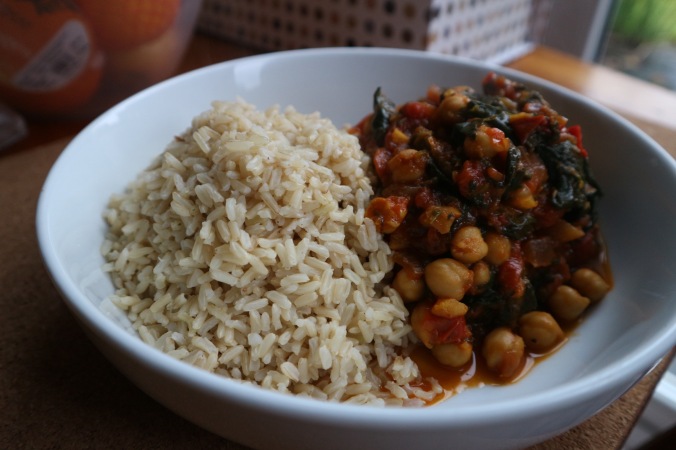Not everyone is in agreement over mock meats. Are they helpful in weaning omnivores off meat? Do they provide a healthy source of plant-based protein? Is it really vegan to advertise a product which “tastes just like meat”?
For me, I think that whatever helps a person give up meat is a very valuable tool to the vegan cause. So, an uncannily beefy burger made from soy is infinitely better than the actual beef itself. That being said, I’ve found that I don’t enjoy eating products which recall the taste and texture of meat. Although that sounds quite puritanical, if a friend kindly provided me with a veggie sausage at a barbecue, I would happily accept; and, I’m quite partial to a Quorn fishless finger. On the other hand, the new variety of burgers which supposedly bleed take the mock-meat to the next level, one which I don’t necessarily agree with. Why does a vegetable burger need to square up to its animal counterpart? Why can’t we hold it as something entirely separate to meat, rather than comparing it constantly with something it’ll never quite be? A burger which bleeds models itself on a product of extreme injustice and cruelty. Perhaps this burger seeks to perpetuate the so-called human craving for meat, in tricking both our eyes and our tastebuds. This carnivorous ‘instinct’ is not innate – from the moment we’re born, humans are conditioned to think, act, and be a certain way, and foods we are taught that we need to eat is a part of this. Arguably, a mock-meat which looks to satisfy this conditioned craving for meat, to the extent that it bleeds, damages the vegan attempt to argue that eating flesh is not natural.
I like to believe that in consuming the average soya protein sausage, we are parodying the meat-power association: meat has always been a symbol of inequality, from the days in which the wealthy flaunted their meat consumption over the vegetable diets of the poor, to the diners today in expensive restaurants who buy vastly overpriced steaks or consume a live octopus to show off their wealth and refinement. I read a study recently which corroborated Carol J. Adams feminist-vegetarian critique in The Sexual Politics of Meat (an absolutely eye-opening and fascinating read): men today eat more red meat than women, and see reducing meat intake as a perversion of Western masculine hegemony. So, through eating burgers which look and even taste like meat, but essentially are not meat, we can challenge the performative aspect of meat-eating as associated with power and masculinity.
I recently tried vegan fried chicken for the first time, out of curiosity. That might make me a hypocrite, but it’s better than unfairly condemning the mock-meat family. This variety was made from seitan and deep-fat fried; they smelled quite like chicken nuggets, recalling the McDonald’s of my childhood. Resembling popcorn chicken, they were crispy on the outside, and ‘tender’ on the inside; my omnivorous friend said that there was a definite similarity to chicken, although not a striking one. In all honesty, I wasn’t too keen. They didn’t taste fantastic, even when smothered in barbecue sauce, and I felt laden down and heavy after eating five or six of them. What’s more, they cost more than most other options on the menu, at £13.50 – which for me highlighted the way in which the vegan diet is often made out to be ‘exclusive’.

Veganism is not a binary. There are shades of opinion and varying beliefs within the conscious choices vegans make. I know those who don’t like salads, and marvel at others who shun cooked food. Where we stand on mock-meat is another issue. When we can get enough protein from beans, pulses, grains, and nuts, soy burgers aren’t essential; but not everyone has the time or motivation to plan what they eat quite as carefully, in which case soy mince in a spag bol is the best option. Moderation, as always, is key, so eating a lot of mock-meat isn’t the best way forward. Experimentation with wholefoods can lead you in new directions, including to the beautiful discovery of homemade lentil and beetroot burgers. But there’s nothing at all wrong with vegan popcorn chick’n once in a while.


